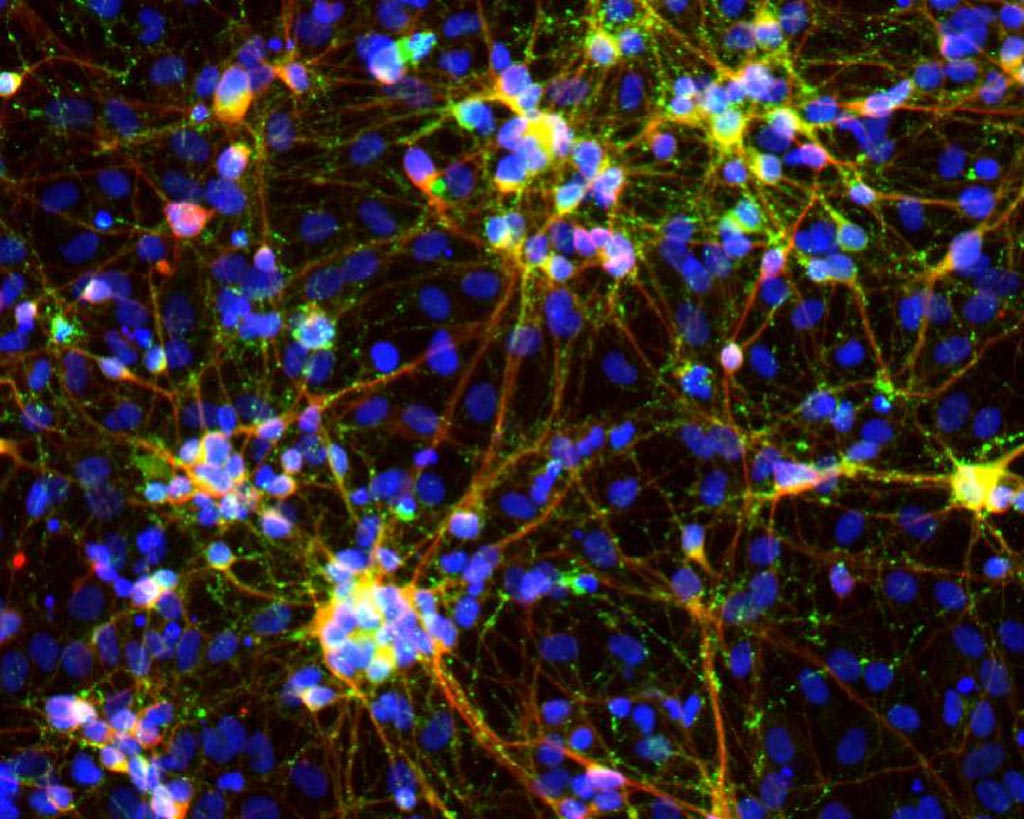Neuronal Identity Established by Specific Transcription Factors
By LabMedica International staff writers
Posted on 22 May 2018
A team of neurodegenerative disease researchers has developed a protocol for the consistent transformation of stem cells of fibroblast origin into specific classes of neurons for brain research and drug development.Posted on 22 May 2018
Transient expression of certain transcription factors has been found to endow non-neural cells with neuronal properties. The relationship between reprogramming factors and the transcriptional networks that produce neuronal identity and diversity remains largely unknown.

Image: Human induced neurons generated from a novel transcription factor pair. Colors represent a nuclear stain (DAPI) in blue, synaptic marker expression (Synapsin1) in green, and neuron-specific beta-III tubulin expression (Tuj1) in red (Photo courtesy of Dr. Kristin Baldwin, The Scripps Research Institute).
To study this process, investigators at The Scripps Research Institute (La Jolla, CA; USA) screened 598 pairs of transcription factors in a mouse model system.
They reported in the May 9, 2018, online edition of the journal Nature that 76 pairs of transcription factors (12.7%) induced mouse fibroblasts to differentiate into cells with neuronal features. By comparing the transcriptomes of these induced neuronal cells (iN cells) with those of natural neurons, the investigators defined a "core" cell-autonomous neuronal signature. The iN cells also exhibited diversity; each transcription factor pair produced iN cells with unique transcriptional patterns that could predict their pharmacological responses. By linking distinct transcription factor input "codes" to defined transcriptional outputs, these findings delineated cell-autonomous features of neuronal identity and diversity and expanded the reprogramming toolbox to facilitate engineering of induced neurons with desired patterns of gene expression and related functional properties.
"The brain is incredibly complex, with thousands of different types of cells that are each involved in different diseases," said senior author Dr. Kristin Baldwin, a professor at the Scripps Research Institute. "The problem with understanding and treating the many disorders of the brain is that we cannot reproducibly produce the right types of brain cells. Now we have found more than 75 new ways to rapidly and reproducibly turn skin cells into neurons that we think will be much better representatives of different neurologic diseases than were previously available. Having a personalized and nearly unlimited supply of different types of neuronal cells in a dish lets you uncover what is going wrong in a disease. At the same time, the study supplies a new toolkit to test thousands of drugs on the affected cells to try to reverse the problems, rather than having to test them in mice or other animals, with results that are often difficult to interpret for human conditions."
Related Links:
The Scripps Research Institute













